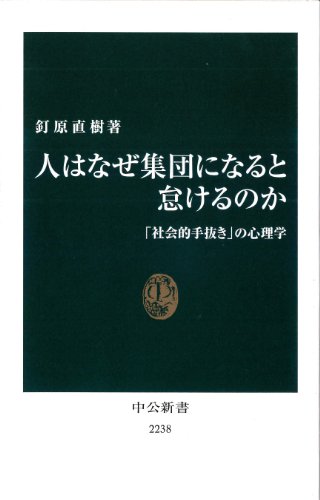1 0 0 0 OA 緊急事態におけるパニック発生説の真偽
- 著者
- 釘原 直樹 クギハラ ナオキ Kugihara Naoki
- 出版者
- 大阪大学大学院人間科学研究科社会心理学研究室
- 雑誌
- 対人社会心理学研究 (ISSN:13462857)
- 巻号頁・発行日
- vol.15, pp.1-6, 2015-03-31
災害や緊急事態の人間行動に関する研究結果は人々の一般的イメージ(パニックや反社会的行動の発生)とは異なる。実証的研究データの多くが、人は緊急事態では人間関係や社会規範に基づいた順社会的行動をすることを示している。ここでは、実証的研究の結果に基づき危機事態の行動や意思決定について述べることにする。
1 0 0 0 IR 災害被害者の責任帰属についての検証 : テロは殺人とは違うのか
- 著者
- 竹内 穂乃佳 釘原 直樹 Takeuchi Honoka Kugihara Naoki タケウチ ホノカ クギハラ ナオキ
- 出版者
- 大阪大学大学院人間科学研究科対人社会心理学研究室
- 雑誌
- 対人社会心理学研究 = Japanese journal of interpersonal and social psychology (ISSN:13462857)
- 巻号頁・発行日
- no.16, pp.27-32, 2016-03
Previous studies have revealed that observer's tendencies to attribute to unfortunate victims is affected by the victims'environments and by their willingness to resist disaster. A number of scholars tackle this issue in America, after 9.11,however, this topic has not been very thoroughly studied in Japan. In this study, we used 3 terms ("fault","carelessness"and"responsibility")to study, whether blame attribution differed between case of murder and terrorism.A2×2×2 mixed design (will vs. no will)×(high risk vs.low risk of encountering disaster)×(murder vs.terrorism)was used.The results revealed that in concerning"fault",observers attribute more blame to the victims in both the will and high risk conditions.Furthermore,in the case of the term"careless",observers attribute more blame to victims in the low risk and murder conditions. However, concerning"responsibility", observers'attributions did not differ between any of the conditions. These results suggest observers'blame attribution was influenced by the attaching of labels (fault, carelessness, and responsibility) to the victims'behaviors.従来、第三者の災害被害者に対する責任帰属は本人の抵抗の意思や周りの環境によって変化するといわれてきた。この問題に関してアメリカでは9.11テロ事件以降研究が増加した一方で、日本での研究はほとんど行われていないのが現状である。そこで、本研究では帰属ラベルに「落ち度」、「隙」、「責任」を用い、さらにテロと殺人によって責任帰属が異なるのか否か検討をした。本研究の実験デザインは(被害者の意思(事件現場に自発的に行ったか否か):有条件・無条件)×(災害に遭遇する可能性:高条件・低条件)×(災害の種類:殺人条件・テロ条件)の3要因混合計画であった。その結果、被害者の自発的意思有条件の方が無条件よりも、災害に遭遇する可能性高条件の方が低条件よりも被害者に「落ち度」があるとされた。さらに災害に遭遇する可能性が低い場合には殺人条件の方がテロ条件よりも「隙」があるとされた。一方、帰属ラベルが「責任」の場合は条件間の差異は見出されなかった。以上から、帰属ラベルがテロ被害者への責任帰属に影響を与えることが示唆された。
1 0 0 0 IR 被害者への共感的観察が脆弱性認知に及ぼす影響 : 詐欺被害事例を用いた検討
- 著者
- 大工 泰裕 阿形 亜子 釘原 直樹 Agata Ako Kugihara Naoki Daiku Yasuhiro ダイク ヤスヒロ クギハラ ナオキ アガタ アコ
- 出版者
- 大阪大学大学院人間科学研究科対人社会心理学研究室
- 雑誌
- 対人社会心理学研究 = Japanese journal of interpersonal and social psychology (ISSN:13462857)
- 巻号頁・発行日
- no.16, pp.21-26, 2016-03
Currently,scams are one of the biggest social problems in Japan.This study investigates whether empathetic observation increases individuals'awareness of their own vulnerability to scams.Moreover, we compared individuals'evaluation of imagined others' vulnerability to that of their own vulnerability.We presented two fraud scenarios (scenarioA and scenarioM)to university students and asked them to rate the victim's responsibility for being defrauded and their own or imagined others'vulnerability to scams. A2×2 between-participants design was used to analyze the relationship between empathetic observation (empathetic,non-empathetic)and the target of vulnerability evaluation(self,others).The results of an ANOVA revealed that empathetic observation did not affect attribution; therefore, the possibility of a failed manipulation was implied. As for vulnerability awareness,the interaction effect was significant in scenario M,which contrasted our expectations. Problems and implications are discussed.詐欺被害が近年大きな社会問題となっており、関係各所が様々な対策を講じているものの一向に問題が解決する気配はみられない。その原因として、詐欺に対する脆弱性認知が十分に向上していないことが考えられる。本研究ではそのような背景を踏まえ、詐欺被害事例を読んだ際に被害者に共感的観察を行うことが、詐欺に対する脆弱性認知を向上させるのかということについて、2種類の詐欺被害事例(事例A, M)を用いた質問紙によって検討した。また、同時に他者に対する脆弱性も評価させ、自己に対する脆弱性認知との比較も試みた。その結果、共感的観察の操作に問題があった可能性が示唆され、事例Aでは脆弱性認知の変化は見られなかった。一方、事例Mでは当初の予測とは異なり、共感的観察が逆効果となる可能性が示唆された。今後は、より統制された状況の設定や、新たな共変量を加えたモデルの開発などさらなる検討が必要とされる。
1 0 0 0 模擬被災状況における避難行動力学に関する実験的研究 (I)
- 著者
- 釘原 直樹 三隅 二不二 佐藤 静一
- 出版者
- The Japanese Group Dynamics Association
- 雑誌
- 実験社会心理学研究 (ISSN:03877973)
- 巻号頁・発行日
- vol.20, no.1, pp.55-67, 1980
- 被引用文献数
- 1 2
本研究は新しく考案された装置を用いることによって集団の大きさが模擬被災状況における避難行動, 即ち, 脱出成功率や混雑発生の度合, 脱出や攻撃, 譲歩反応の生起, 競合過程に及ぼす効果について実験的に検討したものである.<BR>被験者は制限時間内に, 電気ショックがくるという危機的場面から脱出しなければならない状況におかれた. 但し, 脱出口は1つしかなく, しかも複数の人間が同時に通り抜けることはできないように実験事態が設定されていた. そのうえ, 1人が20秒 (脱出ボタン100回の打叩時間) 近くも脱出口を占拠する必要があった. 混雑が生じた際には, 被験者は攻撃か譲歩かまたは全然反応せず他者の反応を待つという3つの解決方法を執ることができた. 実験は暗室でおこなわれ, 聴覚はwhite noiseで他の音から遮断されていた.<BR>本実験の条件下において次の結果が見出された.<BR>1. 集団の大きさの変化にかかわらず, 1人当りの脱出許容時間を一定にした条件下で, 集団の大きさが増大すれば, それにともなって混雑が大きくなる. そして, 脱出率は低下する. 特に, 4人集団と5人集団の間の脱出率の低下が顕著であった.<BR>2. 集団サイズが大きい場合, 即ち, 7人, 9人の場合や小さい場合, 即ち, 3人, 4人の場合より, その中間の6人の場合に, 最も競争的反応がみられた. それは不安定な報酬構造という観点から解釈された.<BR>3. 時間経過に伴って攻撃反応が増大し, 譲歩反応が減少するような状況は全員脱出に失敗することが明らかになった.
- 著者
- 武藤 麻美 釘原 直樹
- 出版者
- 日本応用心理学会
- 雑誌
- 応用心理学研究 = Japanese journal of applied psychology (ISSN:03874605)
- 巻号頁・発行日
- vol.41, no.1, pp.10-17, 2015-07
1 0 0 0 OA スポーツ集合的効力感尺度の改訂・邦訳と構成概念妥当性の検討
- 著者
- 内田 遼介 町田 萌 土屋 裕睦 釘原 直樹
- 出版者
- 一般社団法人 日本体育学会
- 雑誌
- 体育学研究 (ISSN:04846710)
- 巻号頁・発行日
- pp.13086, (Released:2014-08-11)
- 参考文献数
- 32
- 被引用文献数
- 4 2
Collective efficacy has been identified as a critical determinant of team success in sport. Many studies in sport psychology have focused on the relationships between collective efficacy and psychological variables or outcomes of interest. Although an increasing number of studies on collective efficacy have been conducted in Japan, greater attention should be given to refining the methodology for assessing the construct of collective efficacy. The purposes of this study were to confirm the factor structure and establish construct validity of the Japanese translated version of the Collective Efficacy Questionnaire for Sports (J-CEQS) with revisions to its original version (Short et al., 2005). The participants were 1244 athletes from 48 teams. We conducted a confirmatory factor analysis and found that the J-CEQS showed the same multidimensional factor structure as Short's original questionnaire. To test the construct validity of the J-CEQS, we examined correlations among its subscale scores with the Group Environment Questionnaire (GEQ; Carron et al., 1985). All the J-CEQS subscales were significantly correlated with the group integration-task subscales. The unity subscale of the J-CEQS was also significantly correlated with all the GEQ subscales. These correlations were similar to those shown in previous studies (Martínez et al., 2011; Short et al., 2005). The present findings provide preliminary support for the utility of the J-CEQS as a measure for assessing collective efficacy in sport teams. We discuss recommendations for future studies using the J-CEQS.
1 0 0 0 人はなぜ集団になると怠けるのか : 「社会的手抜き」の心理学
1 0 0 0 向社会的行動における競争的利他主義の検討
- 著者
- 阿形 亜子 釘原 直樹
- 出版者
- 日本グループ・ダイナミックス学会
- 雑誌
- 実験社会心理学研究 (ISSN:03877973)
- 巻号頁・発行日
- vol.53, no.2, pp.108-115, 2014-03
